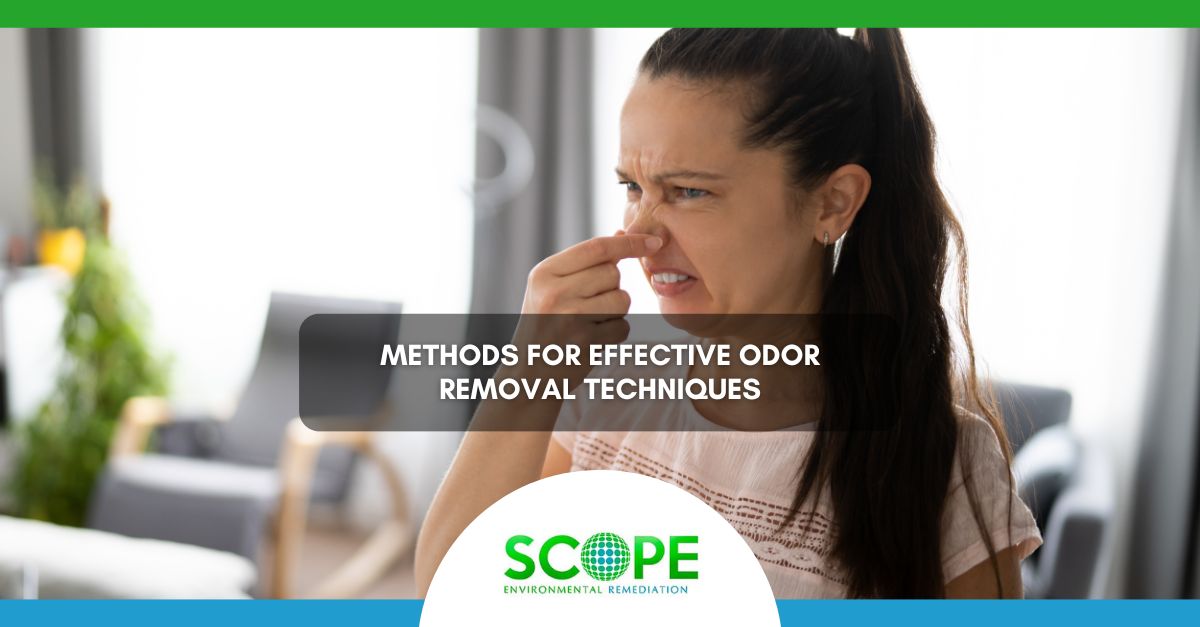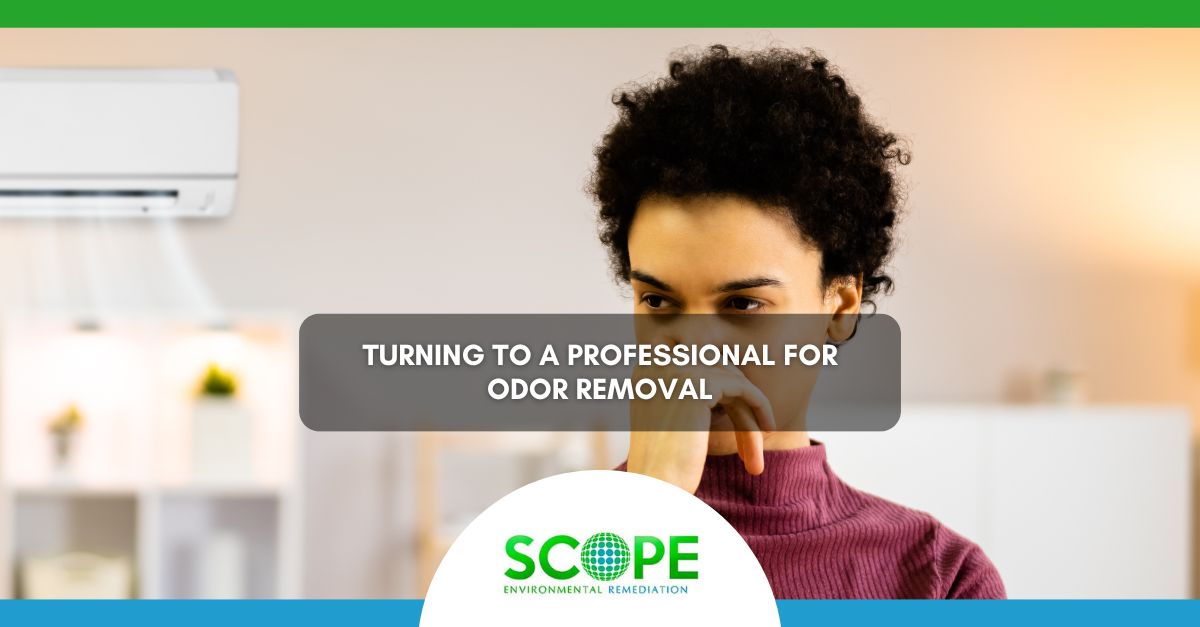There is nothing more frustrating than an unwanted odor that you cannot get rid of. Every time you walk into your home, or get into your car, a foul smell can immediately become a distraction. Should you have guests coming over soon, or for your own peace of mind, it makes sense that you would want to dispatch with bad odors as quickly as you can. Sometimes, the source of a sinister smell is easy to identify, as it is likely coming from a recent spill somewhere in your home. Other times, though, what is driving that smell can be difficult to determine, as it may not be visible to the naked eye. A professional cleaning service such as ours at SCOPE Environmental Remediation has to deal with bad odors on nearly every job that we do. As such, we have come across some effective odor-removal techniques over the years.
The Process of Chemical-Based Odor Removal
There is a basic process to follow when seeking to remove an odor. First, and perhaps most obviously, you will want to identify the source of the smell you are dealing with. Next, you need to remove that source, whether it is a soiled carpet, water-damaged drywall, or some other material. When you are dealing with odors that household cleaners cannot eradicate, a professional service may need to take a more chemical-based approach. There are a number of different options that can be used, and each has its strengths and weaknesses.
Ozone for Odor Removal
Ozone is for odor eradication. It can be dangerous if not handled properly, but it has long been a go-to chemical for cleaning professionals. Ozone works at a molecular level by moving an extra oxygen molecule to the odor molecule, which fundamentally transforms its molecular structure. This can be a very effective tactic for getting rid of unwanted smells.
The Use of Hydroxyl
As previously mentioned, there are some safety concerns with the use of Ozone. Because of this, many professional cleaners have begun using Hydroxyl as an alternative. Second, only to atomic fluorine, Hydroxyl is one of the most powerful oxidants on the market. Hydroxyl is also much more reactive than Ozone, which allows it to impact a more diverse range of pathogens and odors. There is also evidence that Hydroxyl is more safe to use when working in occupied spaces. The Fogging Technique
An alternative method for removing odors that remains popular is fogging. Foggers essentially deploy odor eliminators, oxidizers, and paring agents either via cold or hot fogging. The use of fogging does call for some additional consideration when working in occupied spaces, as it will change the air environment.
Get Rid of Your Odors with Our Help
If there is a stubborn scent that you are sick of smelling, work with the professionals at SCOPE Environmental Remediation. We use a number of different techniques to pursue effective and safe odor dispersal. If you would like to learn more about our services, or schedule an in-home consultation, contact us today.



